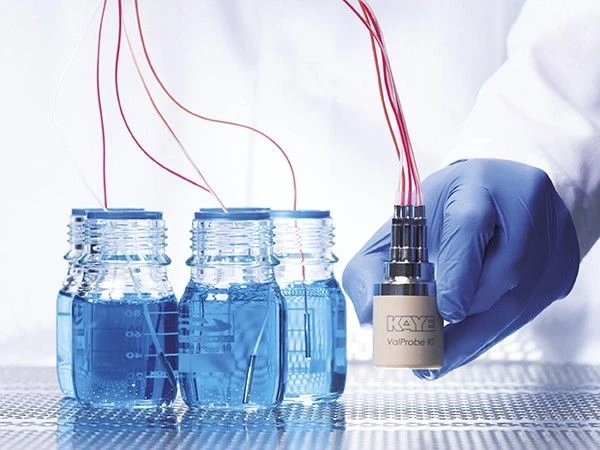In today’s fast-paced industrial, environmental, and scientific landscapes, having immediate access to accurate and continuous data is critical for decision-making, quality control, and regulatory compliance. This is where a Real Time Data Logger becomes an indispensable tool. Through Real-Time Data Logging, organizations can monitor, record, and analyze data as it happens, enabling quicker responses and enhanced operational efficiency.
What is a Real Time Data Logger?
A Real Time Data Logger is an electronic device designed to continuously record data from sensors or instruments while simultaneously providing instant access to that data. Unlike traditional data loggers, which store information to be downloaded and reviewed later, real-time data loggers offer immediate visibility into ongoing processes and environmental conditions.
These devices can monitor a wide range of parameters, such as temperature, humidity, pressure, voltage, or even complex environmental factors depending on the sensors connected. Real-time data loggers often come equipped with wireless communication capabilities, enabling remote monitoring and real-time alerts.
The Importance of Real-Time Data Logging
Real-Time Data Logging transforms raw data into actionable insights by delivering continuous, up-to-the-minute information. This capability is vital for industries that rely on precision and timely interventions, including pharmaceuticals, food storage, manufacturing, energy, and environmental monitoring.
The benefits of real-time data logging include:
- Immediate Problem Detection: Continuous monitoring helps quickly identify anomalies or deviations from set parameters, reducing downtime and preventing costly errors.
- Improved Compliance: Many regulatory bodies require detailed documentation of environmental conditions, especially for sensitive products like drugs and perishables. Real-time logging ensures accurate and continuous records.
- Enhanced Process Optimization: By analyzing real-time data, companies can fine-tune operations, improving efficiency, reducing waste, and maintaining consistent quality.
- Remote Accessibility: Modern real-time data loggers often support cloud connectivity, allowing teams to monitor data from anywhere, at any time. This flexibility is invaluable for multi-site operations or fieldwork.
How Real Time Data Loggers Work
A typical Real Time Data Logger integrates sensors that measure environmental or process variables. These sensors send signals to the logger’s processor, which converts and stores the data digitally. The real-time aspect comes into play through continuous data capture and instant transmission via wired or wireless networks.
Many data loggers feature user-friendly software platforms that display live graphs, charts, and reports, making it easier to interpret data trends. Alerts and notifications can be programmed to trigger if measurements exceed pre-set thresholds, enabling proactive management.
Applications of Real-Time Data Logging
The applications of Real-Time Data Logging are diverse and growing:
- Pharmaceutical and Healthcare: Monitoring temperature and humidity in storage facilities and during transportation ensures the integrity of vaccines and medicines.
- Environmental Monitoring: Real-time data loggers track air quality, water parameters, and weather conditions for research and regulatory compliance.
- Food and Beverage Industry: Ensures cold chain integrity during storage and shipping, maintaining food safety standards.
- Manufacturing: Tracks machine performance and environmental conditions on the factory floor to minimize defects and optimize production.
- Energy Sector: Monitors parameters such as voltage, current, and temperature in power plants and renewable energy installations to maximize efficiency and safety.
Choosing the Right Real Time Data Logger
Selecting the ideal real-time data logger depends on specific application needs:
- Parameter Compatibility: Ensure the logger supports the environmental or process variables you need to measure.
- Data Transmission: Consider whether wireless, cellular, or wired communication is most suitable for your site and operations.
- Battery Life and Power Options: Long battery life or mains power capability is crucial for uninterrupted monitoring.
- Data Storage Capacity: Sufficient onboard memory is necessary to avoid data loss during network outages.
- Software Features: Look for intuitive interfaces, customizable alerts, and robust reporting tools.
Future Trends in Real-Time Data Logging
Advances in IoT (Internet of Things) and wireless technology are continuously expanding the capabilities of real-time data loggers. Integration with cloud computing, AI-driven analytics, and mobile applications are making it easier than ever to collect, interpret, and act on data instantaneously. This evolution is enabling smarter, more responsive systems across industries.
Conclusion
A Real Time Data Logger is much more than just a data recording device; it is a gateway to real-time insights that drive smarter decisions and enhanced operational control. Through Real-Time Data Logging, businesses gain the ability to monitor critical parameters continuously, respond swiftly to changes, and ensure compliance with rigorous standards. Whether in pharmaceuticals, environmental monitoring, manufacturing, or energy management, real-time data logging is revolutionizing how data is captured and utilized - helping organizations stay competitive, compliant, and efficient in a rapidly changing world.


